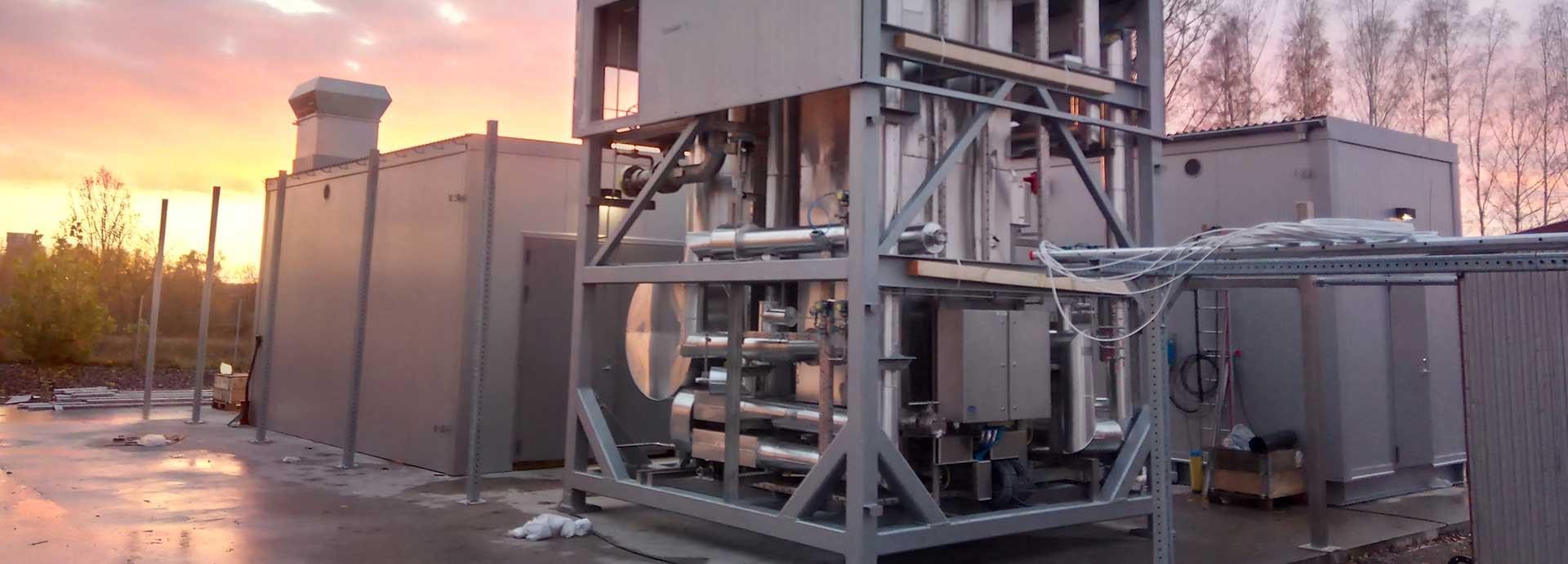

It is the objective of the municipal company Tekniska verken in Linköping to make Linköping the most resource-efficient region in the world. Wärtsilä is supporting this ambitious vision with the delivery of a new liquid biogas (bioLNG) plant, which will enable Linköping to significantly reduce its dependence on fossil fuels.
Liquid biogas (bioLNG) is a viable, climate-friendly alternative for businesses and industries wishing to make the switch to renewable energy. The production of biogas is based on a circular setup from both an economic and ecologic perspective reducing Greenhouse Gases (GHGs) significantly. In some cases, pending the feedstock, there is a reduction of GHG emissions.
Arne Jakobsen, the General Manager, Renewable Gas, Wärtsilä, believes biogas has a central part to play as the world seeks to transition away from fossil fuels.
“The European Union wants 20 percent of European energy consumption to come from renewables by 2020,” he says. “And it’s up to each country to figure out how to meet that target. At Wärtsilä we see an especially bright future forbiogas and bio-LNG and we’re ready to support the expansion of these fuel sources.”
Biogas – in gas and liquid form
Biogas is being used effectively in a variety of applications, such as the generation of heat and electricity and to power public transport. However, in order for it to be transported long distances or used to power heavy industrial processes, the gas first needs to be upgraded using Wärtsilä’s Puregas CA technology which is not cryogenic, and then liquefied, based on a cryogenic process. This requires an bioLNG liquefaction plant, such as the one currently being built in Linköping.
“Wärtsilä has already built two bioLNG plants in Norway and, last spring, we were invited by Tekniska verken in Linköping to submit a tender to expand our existing compressed gas plant there with a biogas liquefaction plant,” explains Jakobsen.
Anna Lövsén heads up the biogas, water and sewage branch of Tekniska verken, a municipally owned, Linköping-based provider of resource-efficient services for the regional market, which range from energy to lighting, water, heating, waste management, broadband and biogas. She explains that Wärtsilä’s tender was the most competitive when all the criteria – from capital expenditure, to operating costs, energy usage and total lifecycle costs – were taken into account.
“We felt confident we’d chosen a partner with the relevant experience and knowledge of liquefaction technology this project needed,” she adds.
Wärtsilä’s liquefaction equipment and expertise
Wärtsilä’s scope in the project is to deliver the cleaning, or polishing, system for the biogas and the cryogenic liquefaction system that turns it from gas to liquid form, as well as the storage tanks, back-up tanks and export system. It is also responsible for implementing and starting up the system before handing it over to Tekniska verken. Last but not least, Wärtsilä will provide a process assurance, guaranteeing the energy efficiency and output capacity of the plant.
Tekniska verken is already a renewable energy trailblazer, having operated a biogas plant in Linköping since 1999. Up to now, the biogas has been upgraded using Wärtsilä Puregas CA technology. The upgraded biogas (biomethane) has mainly been used to power the city’s cars and local bus network, but Lövsén believes the time has come to take it to the next level.
“We want to make non-fossil fuels available to a broader range of new segments that require renewable fuel with a higher energy content, both here in Linköping and further afield,” continues Lövsén. “But, in order for it to be used in these new applications, such as heavy-duty trucks, industrial processes or even shipping, it needs to be available in liquid form.”
Whereas the methane content of compressed biogas (biomethane) is around 97 percent, this must be raised to above 99 percent before the gas is cryogenically liquefied.
Biogas is key to fossil-free future
Jakobsen says the new Wärtsilä bioLNG plant in Linköping will be the most energy-efficient biogas liquefaction plant of its size in the world. Its efficiency will be further enhanced by Wärtsilä’s state-of-the-art biogas cleaning technology, which minimises the loss of unburned methane – also known as the ‘methane slip’ – to less than 0.1 percent. This is a significant improvement on most other technologies, which have a methane slip of anything from 0.5 to two percent.
“At Tekniska verken, our vision is to build the most resource-efficient region in the world. However, to make the transition to a fossil-free society, we will need more alternative fuels than we’re currently able to produce,” says Lövsén, adding that demand for bioLNG is already outstripping supply even through production in Linköping has not yet begun.
“Every small step is a step in the right direction, and with every tonne of fossil fuels we replace, we are helping to reduce overall CO2 emissions,” she concludes.
The contract to implement the Linköping LBG plant was signed by Wärtsilä and Tekniska verken in September 2018. The new plant is currently on track to be up and running at the start of 2020. It is initially projected to produce volumes of approximately 60 GWh per year, gradually ramping up to a full capacity of 85-90 GWh.
Did you like this? Subscribe to Insights updates!
Once every six weeks, you will get the top picks – the latest and the greatest pieces – from this Insights channel by email.